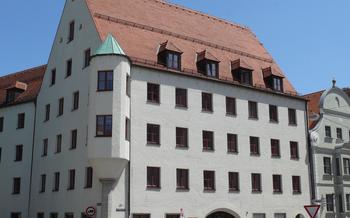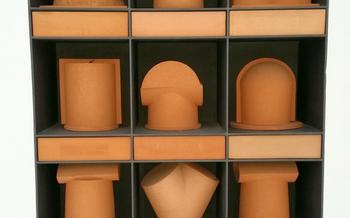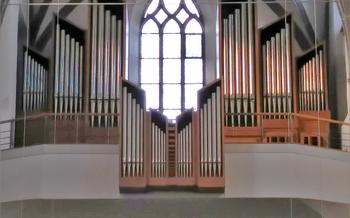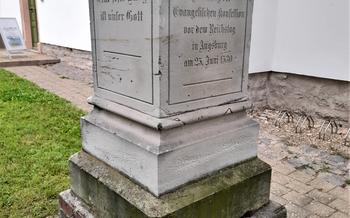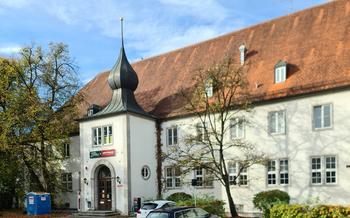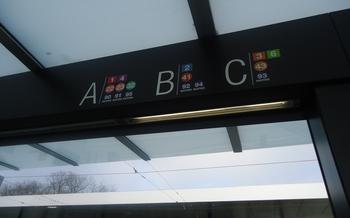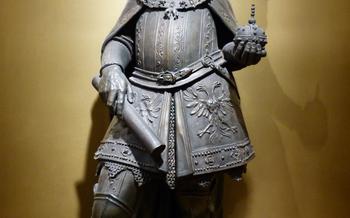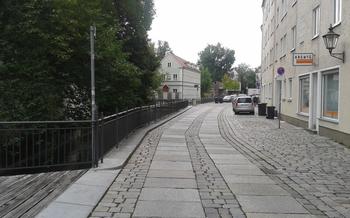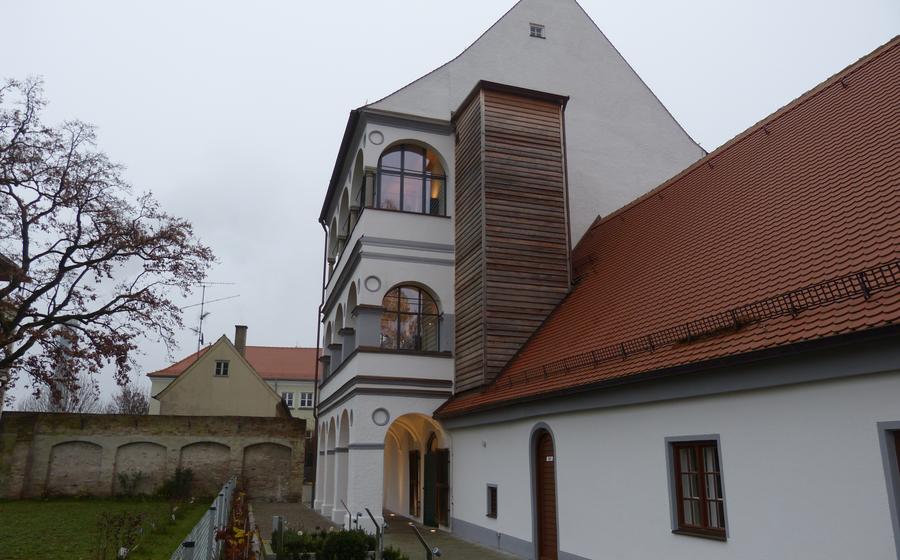
The Fugger and Welser Museum
- The Fugger and Welser Museum: A Journey into Augsburg's Golden Age
- Navigating the Museum: A Comprehensive Guide
- The Fugger Chapel: A Masterpiece of Renaissance Architecture
- The Fugger Houses: Glimpsing the Opulence of a Merchant Dynasty
- The Welser Family: A Legacy of Exploration and Trade
- The Fugger and Welser Archives: A Treasure Trove of Historical Documents
- The Fugger and Welser Foundation: Preserving a Legacy of Philanthropy
- Interactive Exhibits: Bringing History to Life for Visitors
- Educational Programs: Engaging Visitors of All Ages
- Research Opportunities: A Haven for Scholars and Historians
- Museum Shop: A Treasure Trove of Souvenirs and Gifts
- Accessibility and Inclusivity: Ensuring a Welcoming Environment
- Events and Programs: A Vibrant Cultural Calendar
The Fugger and Welser Museum: A Journey into Augsburg's Golden Age
The Fugger and Welser Museum in Augsburg, Germany, stands as a testament to the city's illustrious past and the remarkable legacy of two prominent merchant families, the Fuggers and the Welsers. The museum takes visitors on a captivating journey through Augsburg's "Golden Age," a period when the city flourished as a hub of trade and commerce, thanks to the entrepreneurial spirit and financial acumen of these two families.
The Fuggers, led by the legendary Jakob Fugger the Rich, rose to prominence in the 15th and 16th centuries, amassing immense wealth through their extensive trading network and innovative banking practices. The Welsers, though not as well-known, were equally influential, carving a niche for themselves in the lucrative spice trade and establishing a global trading empire. Their combined contributions transformed Augsburg into one of the most prosperous cities in Europe, earning it the title of "Venice of the North."
The Fugger and Welser Museum is housed in the former Fuggerhaus, a magnificent Renaissance palace that once served as the residence of the Fugger family. This grand building, with its elaborately decorated facade and elegant interior, provides a fitting backdrop for the museum's exceptional collection, which includes priceless artifacts, documents, and artworks that narrate the fascinating story of these two merchant dynasties and their profound impact on Augsburg's history.
Navigating the Museum: A Comprehensive Guide
The Fugger and Welser Museum is strategically located in the heart of Augsburg's historic city center, making it easily accessible by foot, public transportation, or car. The museum is housed in the former city palace of the Fugger family, a magnificent Renaissance building that adds to the overall experience.
Operating hours are typically from Tuesday to Sunday, with extended hours on certain days. Admission fees are reasonable, offering various discounts for students, seniors, and families. Guided tours are available in German and English, providing an in-depth exploration of the museum's highlights. Additionally, audio guides are available for self-guided tours, allowing visitors to set their own pace and focus on specific areas of interest.
The Fugger Chapel: A Masterpiece of Renaissance Architecture
The Fugger Chapel, located within the St. Anne's Church, stands as a testament to the Fugger family's wealth and devotion. Built in the 16th century, the chapel is a masterpiece of Renaissance architecture, showcasing intricate carvings, stunning frescoes, and elaborate stained glass windows. Designed by Elias Holl, one of Augsburg's most renowned architects, the chapel seamlessly blends Gothic and Renaissance elements, creating a harmonious and awe-inspiring space.
The interior of the chapel is adorned with breathtaking frescoes by Hans Holbein the Younger, depicting scenes from the life of Christ and the Virgin Mary. The intricate details and vibrant colors of these frescoes bring the biblical narratives to life, captivating visitors with their artistic mastery. The chapel also features exquisite stained glass windows, crafted by the renowned glass painter Hans Burgkmair, which bathe the interior in a kaleidoscope of colors, adding to the chapel's ethereal atmosphere.
The Fugger Chapel holds immense significance for the Fugger family, serving as their private place of worship and eternal resting place. Elaborate bronze sculptures adorn the tombs of prominent Fugger family members, including Jakob Fugger the Rich, commemorating their contributions to the family's legacy. These sculptures, created by Hans Daucher, are masterpieces of Renaissance art, capturing the individual personalities and achievements of the Fugger patriarchs.
The Fugger Chapel is a must-see attraction for anyone visiting the Fugger and Welser Museum. Its architectural grandeur, artistic masterpieces, and historical significance make it a captivating and unforgettable experience, offering a glimpse into the opulent world of the Fugger family and the artistic brilliance of the Renaissance era.
The Fugger Houses: Glimpsing the Opulence of a Merchant Dynasty
The Fugger houses, located in the heart of Augsburg's old town, stand as a testament to the wealth and power of the Fugger family. Built in the 16th century, these magnificent buildings showcase the architectural styles and opulence that characterized the Renaissance era.
The Fuggerhäuser, a complex of buildings, includes the Fuggerhaus, the Fuggerei, and the Fuggerpalast. The Fuggerhaus, the oldest of the three, was built between 1512 and 1515 and served as the family's main residence. It is renowned for its intricate facade, adorned with sculptures and reliefs depicting scenes from mythology and the Bible.
The Fuggerei, constructed between 1516 and 1523, is a social housing complex built by Jakob Fugger the Younger to provide affordable housing for the city's poor. It comprises 140 apartments, a school, and a church, and is considered the world's oldest social housing project still in use today.
The Fuggerpalast, built between 1569 and 1577, was the grandest of the Fugger residences. It served as a venue for lavish banquets, receptions, and cultural events. The palace boasts an impressive collection of Renaissance art, including paintings, sculptures, and tapestries.
Today, the Fugger houses are open to the public, offering visitors a glimpse into the opulent lifestyle of one of Europe's most powerful merchant families. Guided tours provide insights into the history of the Fuggers and the significance of their architectural legacy.
The Welser Family: A Legacy of Exploration and Trade
The Welser family, alongside the Fuggers, played a pivotal role in shaping Augsburg's commercial prowess. Originating from the Allgäu region, the Welsers established themselves as successful merchants and financiers in the 14th century. Their trading ventures extended across Europe, reaching as far as Africa, the Americas, and the Far East.
The Welser family's most notable achievement was the colonization of Venezuela. In 1528, Emperor Charles V granted them a concession to explore and settle the region. The Welsers established the city of Maracaibo and attempted to exploit the region's natural resources, including gold and pearls. While their colonization efforts ultimately failed, the Welsers' legacy as pioneers of exploration and trade remained intact.
Their contributions to Augsburg's development were multifaceted. The Welser family invested their wealth in the city's infrastructure, constructing canals, bridges, and fortifications. They also supported the arts and sciences, sponsoring artists, scholars, and educational institutions. The Welser family's patronage helped transform Augsburg into a vibrant center of culture and learning.
In the Fugger and Welser Museum, the Welser collection showcases the family's global reach and trading activities. Visitors can admire maps, travelogues, and artifacts that document their expeditions to distant lands. The collection also features portraits of prominent Welser family members, providing insights into their personalities and accomplishments.
The Fugger and Welser Archives: A Treasure Trove of Historical Documents
The Fugger and Welser Archives are a treasure trove of historical documents that provide invaluable insights into the lives and activities of these influential families. The archives contain an extensive collection of letters, account books, contracts, maps, and other documents that span several centuries. These records offer a glimpse into the financial dealings, trade networks, and personal lives of the Fuggers and Welsers.
Researchers from around the world visit the archives to consult these documents for historical research. The archives are particularly valuable for scholars studying the history of trade, finance, and the development of capitalism in Europe. The documents provide detailed information about the Fugger and Welser family businesses, their trading activities, and their relationships with other merchants and rulers.
The archives are open to the public, and visitors can request access to specific documents for research purposes. The staff at the archives is knowledgeable and helpful, and they can assist researchers in finding the documents they need. The archives also offer a variety of educational programs and workshops for visitors of all ages.
The Fugger and Welser Foundation: Preserving a Legacy of Philanthropy
The Fugger and Welser Foundation, established in 1959, stands as a testament to the enduring legacy of these two prominent families. Guided by its mission to preserve and promote cultural heritage, the foundation plays a pivotal role in shaping Augsburg's cultural landscape. Through its diverse initiatives and projects, the foundation supports a wide range of cultural endeavors, including exhibitions, publications, and educational programs.
The foundation's impact extends beyond the confines of the museum, reaching into the heart of the community. It actively supports the restoration and preservation of historical monuments, contributing to the revitalization of Augsburg's rich architectural heritage. Furthermore, the foundation provides scholarships and grants to young scholars and artists, fostering the next generation of cultural leaders.
One of the foundation's most notable contributions is the Fuggerhaus, a meticulously restored Renaissance palace that serves as a vibrant cultural center. It hosts a variety of events, from concerts and exhibitions to lectures and workshops, creating a dynamic space for cultural exchange and learning.
The Fugger and Welser Foundation remains committed to upholding the philanthropic spirit of its founding families. By preserving and promoting Augsburg's cultural heritage, the foundation ensures that the city's rich history and traditions continue to inspire and enrich generations to come.
Interactive Exhibits: Bringing History to Life for Visitors
The Fugger and Welser Museum offers a range of interactive exhibits that bring history to life for visitors of all ages. These exhibits allow visitors to engage with the museum's collection in a hands-on and immersive way, enhancing their understanding of the Fugger and Welser families and their impact on Augsburg's history.
One popular interactive exhibit is a virtual reality experience that transports visitors back in time to the bustling streets of 16th-century Augsburg. Visitors can explore the city's landmarks, interact with historical figures, and learn about the daily lives of the Fugger and Welser families.
Another interactive exhibit invites visitors to try their hand at calligraphy, using traditional tools and techniques to create their own works of art. This exhibit highlights the importance of literacy and education during the Renaissance, when the Fugger and Welser families were known for their patronage of the arts and sciences.
For younger visitors, the museum offers a variety of interactive games and activities that make learning about history fun and engaging. These activities include puzzles, quizzes, and dress-up stations, allowing children to immerse themselves in the world of the Fugger and Welser families.
Through these interactive exhibits, the Fugger and Welser Museum provides visitors with a unique and memorable experience, fostering a deeper understanding of Augsburg's rich history and the enduring legacy of the Fugger and Welser families.
Educational Programs: Engaging Visitors of All Ages
The Fugger and Welser Museum prioritizes education and outreach, offering a diverse range of programs tailored to visitors of all ages. Families can embark on interactive treasure hunts, uncovering hidden stories within the museum's exhibits. School groups have the opportunity to delve deeper into the history of Augsburg and the Fugger and Welser families through guided tours and workshops. The museum also hosts lectures, talks, and symposia featuring renowned experts and scholars, providing visitors with unique insights into the museum's collections and research. These educational initiatives foster a lifelong appreciation for history and culture, inspiring future generations to explore the rich heritage of Augsburg.
Research Opportunities: A Haven for Scholars and Historians
The Fugger and Welser Museum is not just a repository of artifacts and historical accounts; it is also a hub for scholarly research and academic exploration. The museum's extensive archives, housing a wealth of primary sources, provide a fertile ground for researchers to delve into the rich history of Augsburg and its prominent merchant families.
The museum's collection includes a vast array of documents, manuscripts, and correspondence, offering invaluable insights into the economic, social, and cultural landscape of the city during its golden age. Researchers can explore account books, trade ledgers, personal letters, and legal contracts, gaining a glimpse into the intricate workings of the Fugger and Welser empires.
The museum staff is dedicated to fostering a supportive environment for scholars and historians. They provide access to research facilities, including reading rooms, computers, and specialized databases, facilitating in-depth study and analysis of the archival materials. The museum also collaborates with universities and research institutions, offering fellowships, grants, and research residencies to support scholarly endeavors.
Whether you are a seasoned historian, a PhD candidate, or an undergraduate student, the Fugger and Welser Museum offers a wealth of opportunities to engage in meaningful research, contributing to our understanding of this remarkable period in history.
Museum Shop: A Treasure Trove of Souvenirs and Gifts
The Fugger and Welser Museum's gift shop is a treasure trove of unique souvenirs and gifts inspired by the museum's collections. Visitors can find a wide range of items to commemorate their visit, including books, postcards, posters, and replicas of artifacts. There are also a variety of gift items for all ages, such as toys, games, and clothing. By making a purchase at the museum shop, visitors not only take home a piece of history but also support the museum's mission to preserve and share the stories of the Fugger and Welser families.
Accessibility and Inclusivity: Ensuring a Welcoming Environment
The Fugger and Welser Museum is committed to creating an inclusive and welcoming space for all visitors, regardless of their abilities or backgrounds. The museum features a range of accessibility features to ensure that everyone can enjoy the exhibits and learn about the history of the Fugger and Welser families. Wheelchair ramps and elevators provide easy access to all levels of the museum, and accessible restrooms are available throughout the building.
For visitors who are deaf or hard of hearing, the museum offers sign language interpreters upon request. Audio guides are also available in multiple languages, including English, German, French, Spanish, and Italian. The museum staff is trained to assist visitors with disabilities and to answer any questions they may have.
The museum also offers a variety of programs and resources to accommodate visitors with different learning styles and interests. Guided tours are available in multiple languages, and the museum offers a range of educational programs for children, families, and school groups. The museum's website provides detailed information about the exhibits and programs, and it is available in multiple languages.
The Fugger and Welser Museum is dedicated to creating a welcoming environment for all visitors. The museum's commitment to accessibility and inclusivity ensures that everyone can enjoy the museum's exhibits and learn about the fascinating history of the Fugger and Welser families.
Events and Programs: A Vibrant Cultural Calendar
The Fugger and Welser Museum is not just a repository of historical artifacts; it is also a vibrant cultural hub that hosts a wide range of events and programs throughout the year. These events are designed to engage visitors of all ages and interests, offering unique opportunities to delve deeper into the museum's collections and the history of Augsburg.
From captivating lectures by renowned historians to immersive concerts featuring medieval music, the museum's events calendar is always buzzing with activity. Special exhibitions, often curated in collaboration with leading institutions, showcase diverse themes and perspectives, inviting visitors to explore new facets of the Fugger and Welser legacy.
One of the highlights of the museum's cultural program is the annual Fugger and Welser Festival, a week-long celebration that brings the city's rich history to life. During the festival, the streets of Augsburg are transformed into a bustling marketplace, with merchants in period costumes selling traditional wares and artisans demonstrating their skills. Visitors can indulge in medieval feasts, enjoy live music and performances, and immerse themselves in the vibrant atmosphere of a bygone era.
Whether you are a history buff, an art enthusiast, or simply looking for a unique cultural experience, the Fugger and Welser Museum offers an array of events and programs that will captivate and inspire you. Be sure to check the museum's website or social media channels for upcoming events and exhibitions to make the most of your visit.
